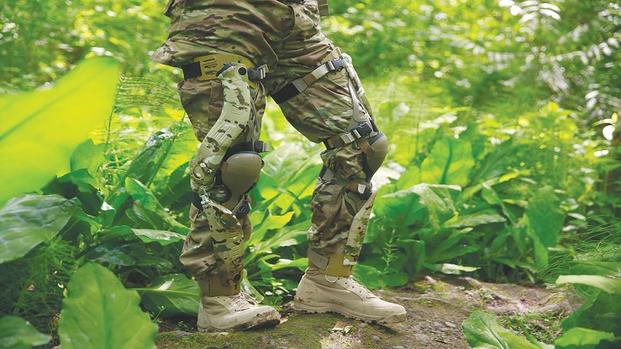Radio losing power on a foot patrol? In the future, the solution may be to run faster.
The Army and Marine Corps both have contracted with Canadian company Bionic Power, Inc. to perform field tests on a knee brace that harvests human kinetic power that then can be used to charge the lithium ion batteries that power a range of military devices.
The wearable titanium system produces seven to 10 watts of power if a soldier is marching at a normal pace, and can harvest more at faster speeds, company CEO Yad Garcha told Military.com here at the AUSA Conference Wednesday.
"If soldiers are heavily weighed down and they’re going downhill, they can produce upwards of 20 watts of power," Garcha said. "It's dependng on speed and depending on terrain. If soldier is going to a lookout point every day, they can wear this device on the way down and they can charge all their equipment."
The system has already undergone early testing at the Army's Soldier Research, Development & Engineering Center in Natick, Massachusetts, Garcha said, and is set to be put through its paces by rank-and-file soldiers and Marines next year. Garcha said the Army planned to equip a squad with the system next summer, while the Marine Corps was set to test the braces on 50 Marines in the same timeframe. It wasn't clear, he said, where the tests are set to take place.
"Basically they’ll say, here’s a 72-hour mission, here’s a technology that you can wear, let’s see if you can be independent for that period of time," he said. "They will probably allow same mission to be done with batteries, allowing them to compare the effectiveness of the mission, the weight on the soldier’s back, the cost of the battery, so they'll have comparative testing."
Garcha did not disclose a unit cost, but said the company was re-engineering and ruggedizing the braces now for manufacture. The Marine Corps has committed to purchasing 50 of the systems, he said, but the Army has yet to determine how many it wants.
One plus of the system is it's lightweight and unobtrusive at just over 2-and-a-half pounds per leg. Garcha said the goal was to reduce the weight of the system to 900 grams, or less than two pounds per leg.
In early phases, troops testing the system have rated its wearability highly.
"They themselves are saying within 3-5 minutes they forget that it’s on," he said.









